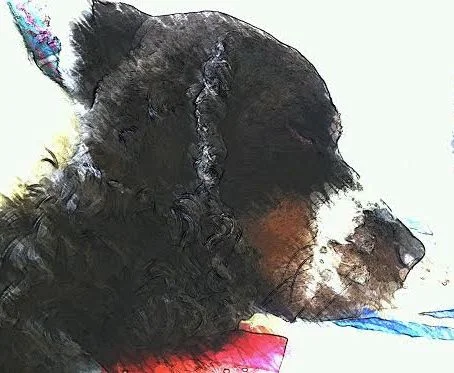I took my Economy Block Lattice Variation cat block to our Proper Bostonian Quilter's Saturday Day Camp this weekend and showed it to the folks who there sewing that day. Everyone really liked the block and my choice of fabrics.
Here is is again:
My friend, Kace, picked up my block and looked at it closely. "You used foundation piecing to make this block?" she asked. "If I had designed this block…."
Her comments were ….Brilliant! I had "EQ 7 brain". If I had created the design on the computer, it had to be good. Right? Maybe not so much!! The computer designed block is beautiful and its symmetry is lovely. But it is hard to sew those "Y" seams making the mitered corners on the strips framing the center block using the foundation piecing. I hadn't even thought to look at the block to see if there were a better way to make it.
Kace suggested 2 alternative ways to construct the block without using foundation piecing.
1. Cut the framing strips straight without mitering the corners.
2. Cut the framing strips longer, and create a miter without the Y seam, the way you would make a mitered border on a quilt.
Kace is going make a test block to see how it works to miter the framing strips without the Y seam.
I went home and made a maquette (a sample) of the block using the straight strips. It was much easier and faster to construct the block this way. And the block is much sturdier. In my foundation pieced block, the inner corners of the mitered strips are weak spots.
I really like the symmetry of the mitered framing strips. But I am using this block to make a baby quilt which going to get a lot of wear and tear. So for a baby quilt, I think the best way to construct the block is to use the straight cut pieces to make the frame. I think it will hold up better over time and it won't change the over-all look of design in the finished quilt.
So thank you Kace for seeing my design from not one, but two, different perspectives!
This project is going to be much better baby quilt thanks to your input!
I'll post the pattern(s) when I finish the quilt and have all the details.







































































































